
How to Measure Tire Tread
Become a tire tread scanning expert
1. Download the Tire Tread Showcase app
The Tire Tread Showcase app is free to download from the Apple app store or Google Play.
2. Receive training from an Anyline expert
To ensure that you have the best experience, an Anyline expert will arrange a comprehensive training session, guiding you through the entire process of successfully measuring your tire tread depth using the Anyline Tire Tread scanner. This session also gives you the chance to ask any questions, ensuring you’re fully prepared and confident before you begin testing the scanner on your own.
3. Request access code
An access code is required to use the Tire Tread scanner. If you do not already have an access code, reach out to your contact from Anyline.
4. Enter access code
To enter your access code, follow these steps
- Open the Showcase app
- A pop up will appear. If you have already received your access code, tap “Scan or Upload QR”. If you require an access code, tap “Book a meeting”.
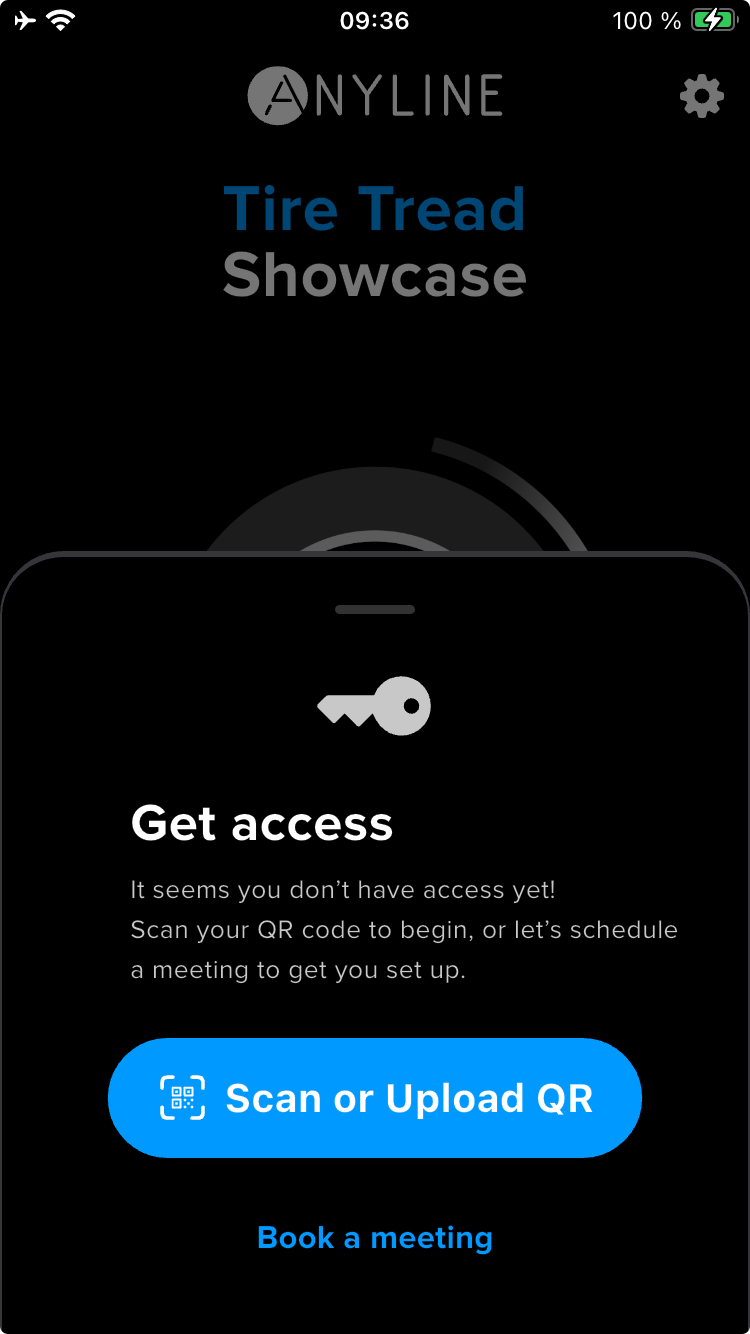
- Position your access code within the blue frame. If you would like to upload an existing image of your access code from your media library, tap on the gallery icon.

- If you access code is valid, you will see the following page and be able to start scanning.

5. Configure app settings
To configure your app settings, open the showcase app and tap the gear icon.

Here are some settings you can configure:
- Capture mode: Select between “Fast” and “Accurate“. “Accurate” mode is recommended for lower performing devices.
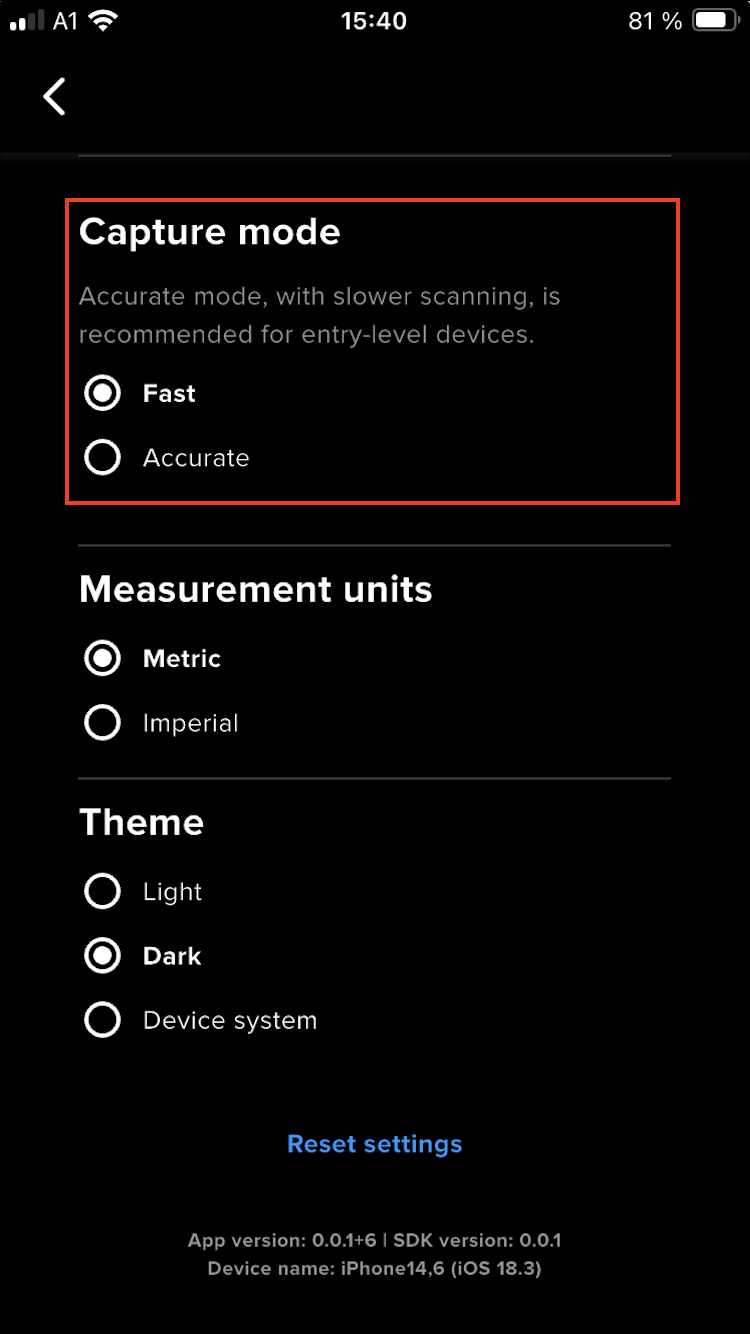
- Measurement system: The default measurement system is metric. To change the measurement system to imperial, select “Imperial“
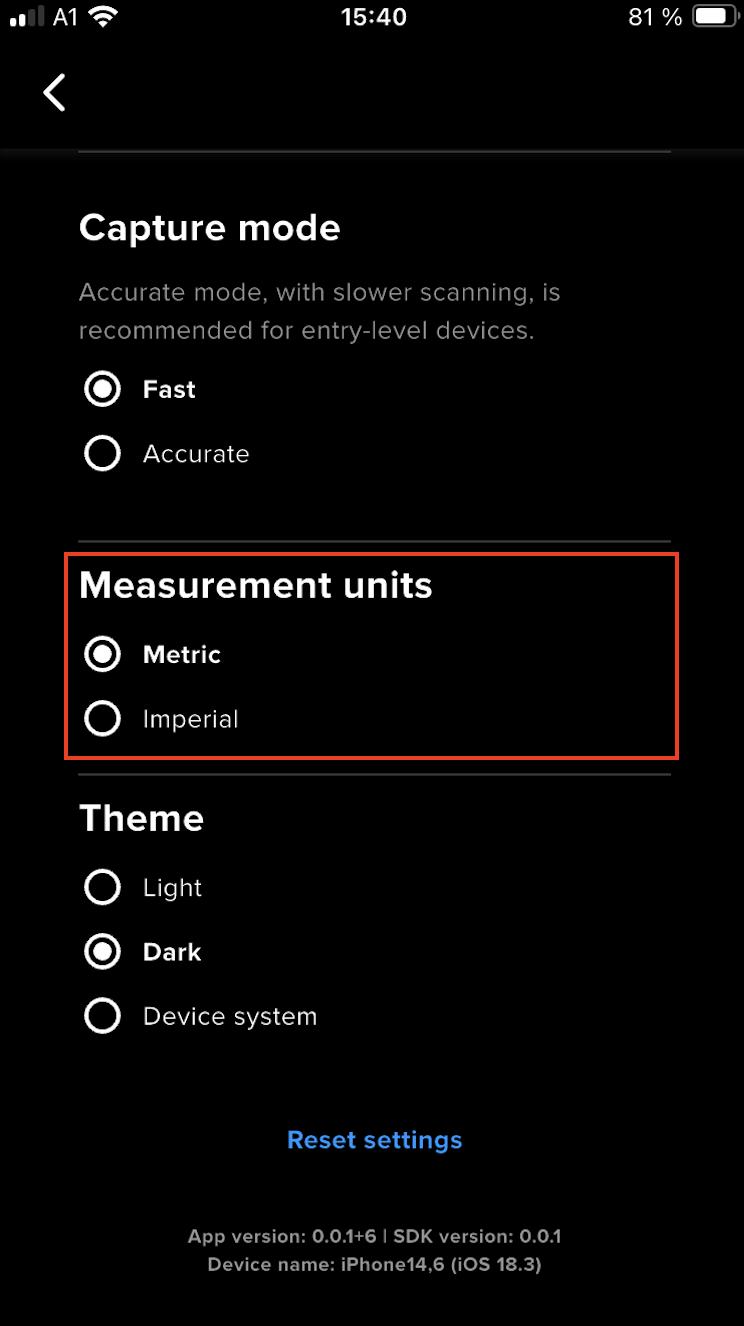
- Theme: Choose between “Light“, “Dark“, or “Device System“
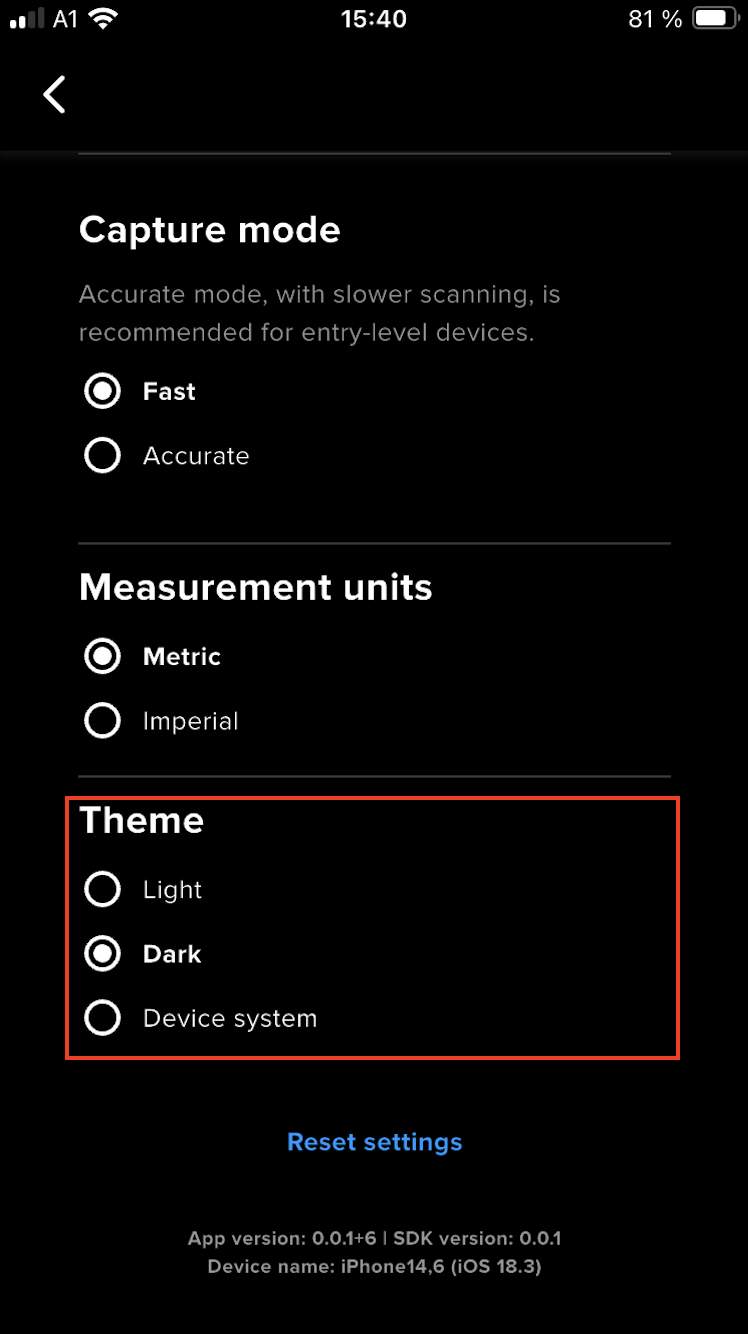
6. Measure tire tread
Before your start measuring your tire tread, take note of the following:
-
Ensure no other tires are visible during the scan apart from the tire you are measuring – especially if they are directly next to or stacked on top of each other. When scanning dual tires, focus solely on the selected tire
-
Ensure strong and stable internet connection
-
Ensure that the screen orientation lock setting of your OS is not active
Once you’ve entered your license key and finalized your settings, you’re ready to start the scan. Watch the video above for an in-depth tutorial on how to scan or follow the step-by-step guide in the next section.
NOTE: It’s perfectly normal if the first attempts are not successful. We recommend doing a few practice scans to get comfortable with the motion before conducting actual measurements.
Step-by-step guide
Launch the Anyline tire tread showcase app and tap “Tap to scan”
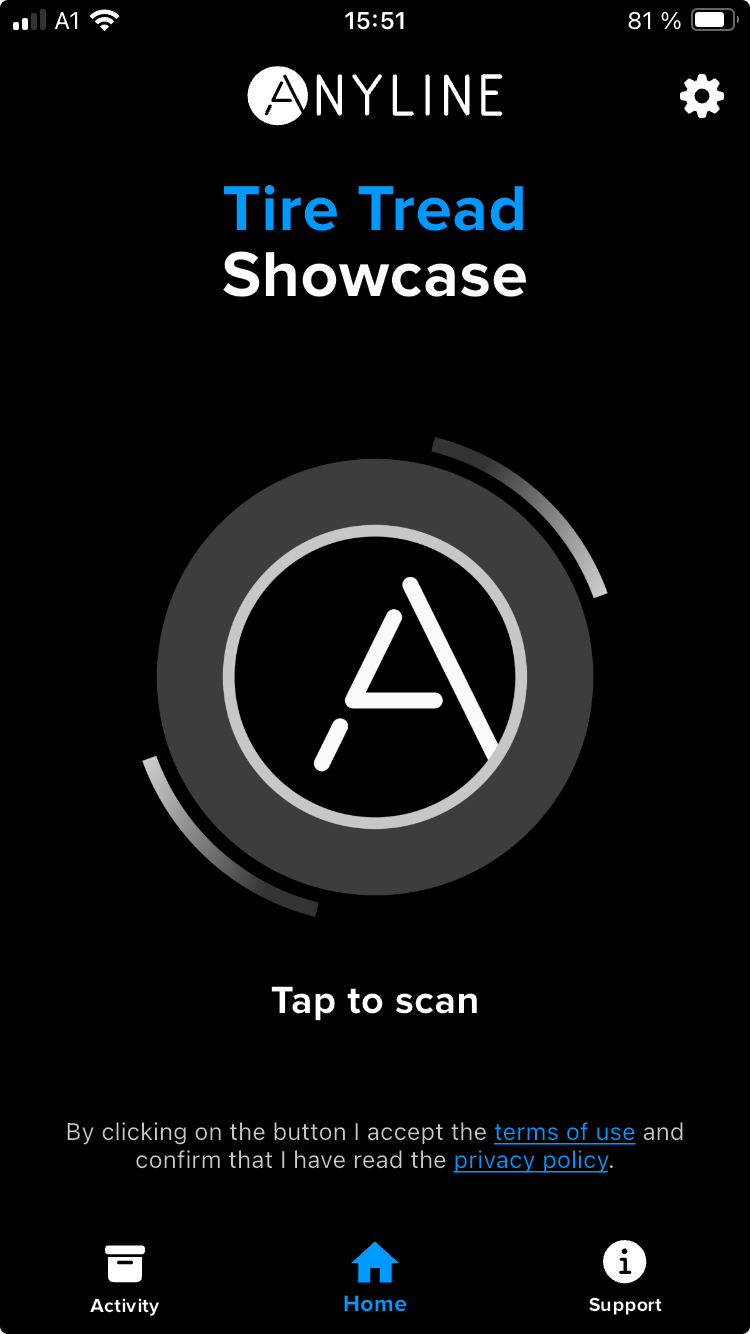
An unmounted tire or having your vehicle lifted will allow you to scan the tire with the greatest ease.
If the tire is mounted on the vehicle, or if the vehicle is not lifted, find a comfortable position for you squat or kneel so that you can access the tire. This is similar to how you would take a manual measurement with a gauge.
PRO TIP: Having your tires turned outwards will ensure you can access the tires more easily

Find a spot across the tire where you can freely move the smartphone across the entire tread, from one tire shoulder to the other.
PRO TIP: Ensure that your line of movement is clear of any obstacles. If you find that the bumper of the vehicle is obstructing your movement, move your device closer to the ground.

Entering the tire width improves the performance of the tire tread scanner on your Android device. Choose from a list of most-common tire widths or enter a custom tire width in the field.

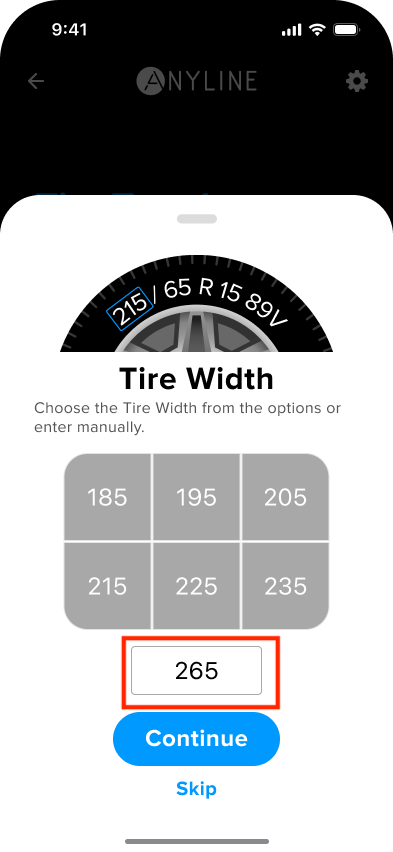
After you’ve selected or entered the tire width, tap “Continue“
For iOS users, initialize the tire detection by pointing your camera at the tire and move your device back and forth slowly. For Android users, proceed to Step 5
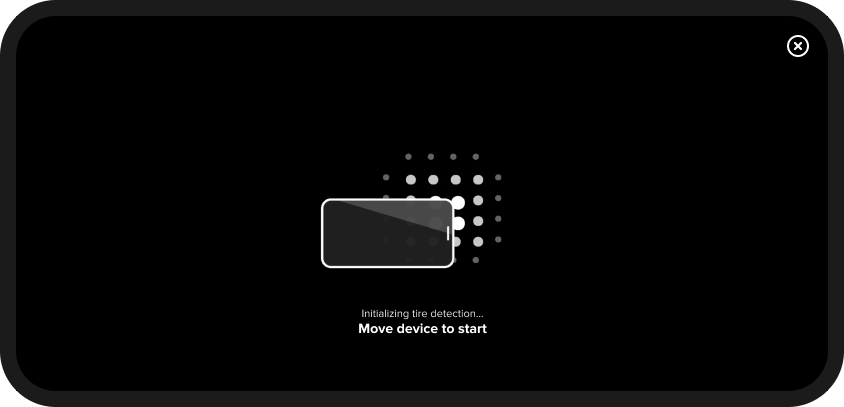
Align the camera with the outer tire shoulder and ensure a distance of 20 cm (8 in) between your device and the tire.

PRO TIP: To get used to the distance, use a measuring tape to measure 20cm (8 in) and mark this distance by drawing a line, or placing an object (preferably something long like a pen or stick) down on the ground at this distance. Perform a practice scan and align your device with the line/object, ensuring that your device does not go beyond it.
NOTE: This distance should be maintained throughout the entire scan. If this distance is not kept, your device will vibrate slightly and audio feedback will be heard. Once the distance is corrected, the vibration and audio feedback will stop.
To ensure accuracy, ensure that the tread’s surface is the focus of the camera. Avoid having the ground or any other object in the frame as this will affect the measurement. This might feel unnatural at first, but we promise it’ll get better the more you do it.
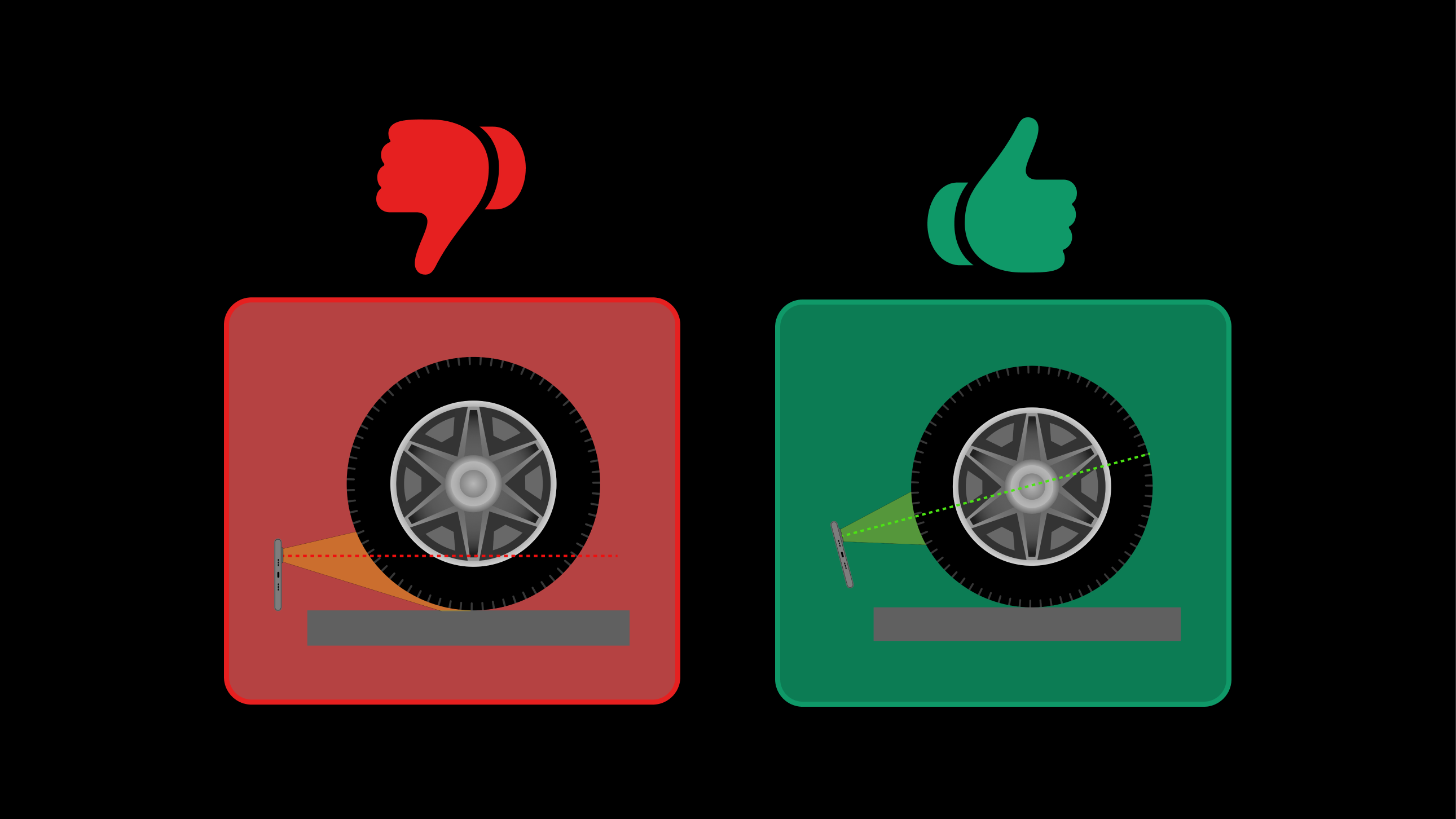
PRO TIP: If your tire is mounted or if your vehicle is not lifted, tilting your device at an approximately 45 degree angle will help you ensure that the tread’s surface is the sole focus of the camera.
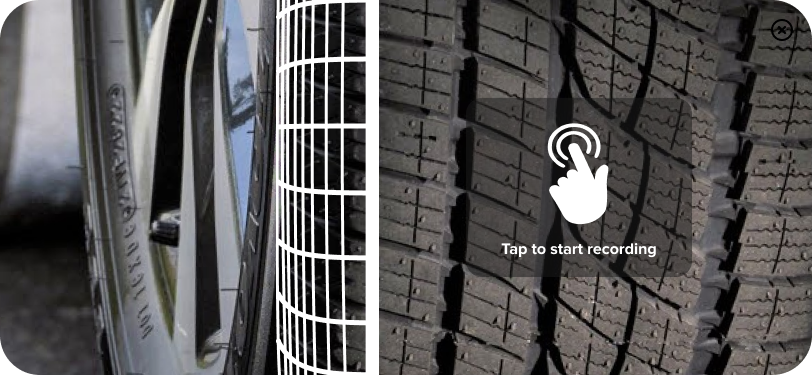
For an accurate measurement, a stable and steady recording is required.Make sure to use the full duration, moving slowly across the tire tread to get a high-quality recording. The scan will automatically finish once the timer stops, with a strong vibration signalling the end.
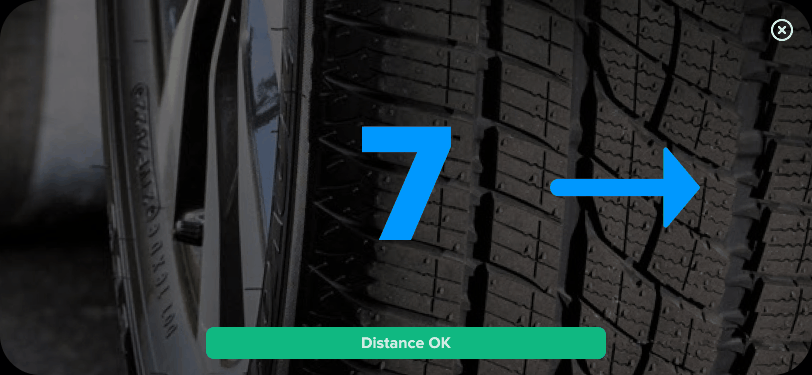
PRO TIP: Perform a practice scan, keeping an eye on the timer. If you can’t watch the timer directly, try verbalizing the countdown by saying, “One Mississippi, two Mississippi, etc.” Keep in mind that the overall scan duration often feels shorter than it actually is, so take your time and use the full duration to ensure optimal results.
Move your device laterally from one tire shoulder to the other and ensure that the entire tread is recorded.
NOTE: The movement should be lateral across the tire, not back and forth from the tire.
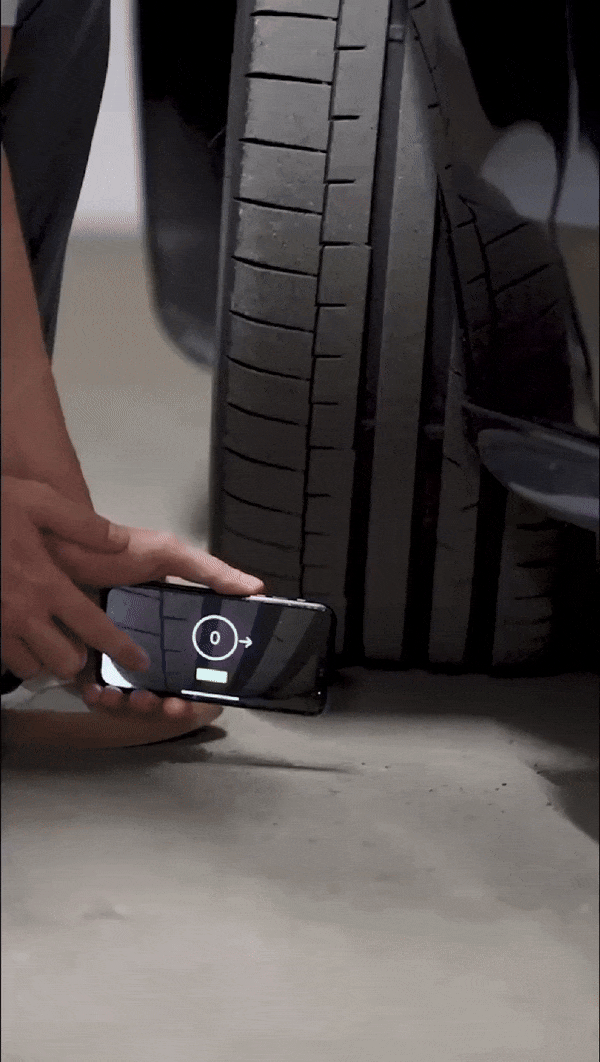
PRO TIP: Think of this action as filming a video or taking a panoramic shot of the tire tread. Perform a practice scan and focus on the movement of capturing the outer tire shoulder to the inner tire shoulder.
The scan will automatically conclude after the on-screen timer finishes the countdown and will vibrate strongly once. You can also manually end the scan by tapping the screen again. At this point, your scan will be uploaded and processed before you are shown the results.

Scanning Tips
Ensure unobstructed access to tire
An unmounted tire or having your vehicle lifted will allow you to scan the tire with the greatest ease. If the tire is mounted or if the vehicle is not lifted, find a comfortable position for you squat or kneel so that you can access the tire.
Rely on haptic feedback
It may be difficult to look at the screen throughout the scanning process. Hence, haptic feedback is available to guide you throughout the scan.
Read More
Here are the haptic feedback available and what they mean.
- Strong vibration: A strong vibration will be delivered both at the start and the end of the scan
- Slight vibration: During the scan, slight vibrations may occur if there are distance issues, signaling that your device is either too close or too far from the tire. If you feel these vibrations, gradually adjust the distance by moving your device closer or farther from the tire until the vibrations stop, indicating the distance has been corrected
PRO TIP: Perform a practice scan without looking at the screen and familiarize yourself with the haptic feedback (vibrations).
Capture only one tire
Ensure that only ONE tire is visible in the frame during the scan to avoid inaccurate readings.
Read More
The tire tread scanner measures the tread depth of only one tire at a time, so it’s crucial that no other tires are in the frame. This is especially important when scanning dual, stacked, or side-by-side tires.

Enter tire width (Android only)
Entering the tire width improves the performance of the tire tread scanner on Android devices.
7. Interpret results
If your measurement was successful, you will be redirected to the results page.

Depending on the measurement system selected in the settings, the tread depth will either be displayed in mm or 32″.
Here is a description of what your results mean:
- Top of Page Slider: This slider shows you the lowest tread depth measured and gives you an indication of the of the overall health of your tire with a traffic light color system. Green indicates that there is a good amount of tread remaining, yellow indicates that there is a moderate amount of tread remaining, and red indicates that there is a low amount of tread remaining.
- Bottom of Page Values: The values displayed at the bottom of the page represent the tread depth of each zone on the tire. It does not represent the measurement of individual grooves. The distribution of the zones can be seen in the heatmap below.
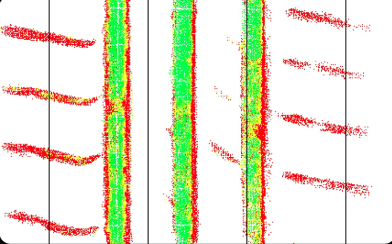
Adding feedback
To add feedback or make manual edits to the measured results, tap “Feedback” at the bottom of the screen.
You can manually input results by tapping on any of the result fields, or add notes about the measurement in the field under “Test notes”. Manually input results will automatically overwrite measured results.
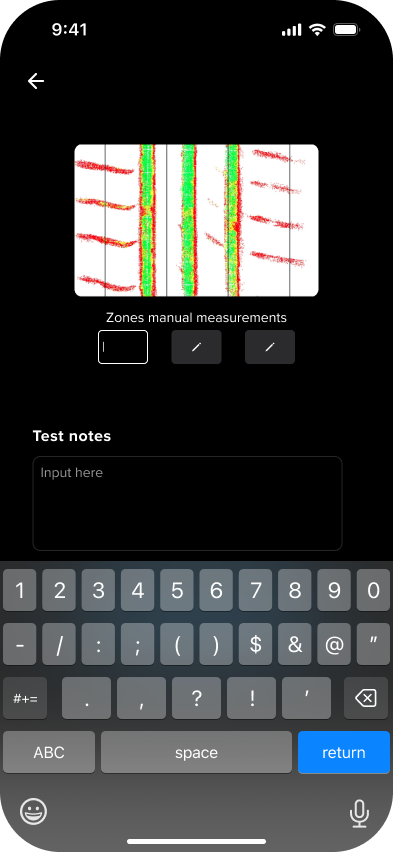
Comparing your results with a manual gauge
Read this article on how to cross-check Anyline’s results with a manual gauge,
NOTE: Anyline’s tire tread scanner captures over 100,000 measurement points, whereas a manual gauge measures just a single point. Hence, comparing the results from these two methods may not provide a fully accurate representation.
FAQs
Screen rotation lock must be disabled in order to enter landscape mode, which is needed for scanning. To disable screen rotation lock, open device quick settings, find the “Rotation Lock” icon, and disable it.
More information about integration can be found on the documentation here.
-
Make sure your device is not on “do not disturb”
-
Make sure your device is not on “silent” mode
-
For Android devices, go to Settings > Sounds and Vibration > Vibration Intensity; check that the intensity for System is turned on
No. The tire tread scanner can only be tested via a separate tire tread showcase app. Which can be downloaded via Google Play and the Apple Ap Store.
You can find the version number by accessing your settings.
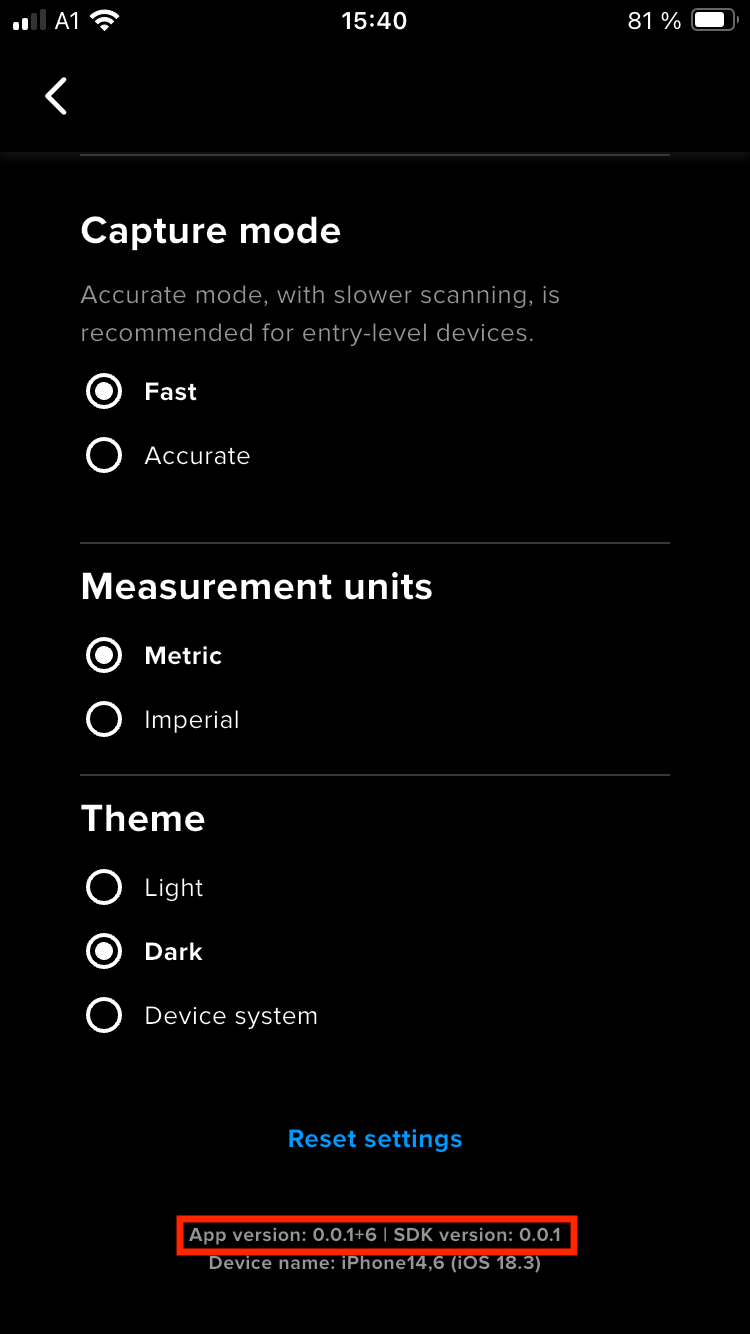
Yes. In addition to the built-in UI, the tire width can also be provided via
- Anyline Tire Sidewall scanner, Tire Size scanner, or Barcode scanner
- ERP system